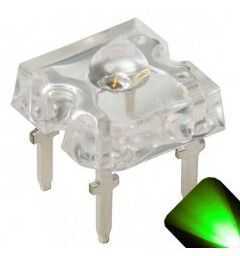Sheet metal enclosure manufacturing involves many different sheet metal forming processes such as roll forming, stamping, peen forming and more. This list compares the good and bad of each process so you can determine the proper one for your own unique requirement.
1. Roll Forming
This process is for long parts with constant complex cross-sections. It produces good surface finish and has high production rates. However, this process has high tool costs.
2. Stretch Forming
Stretch forming can be used to produce large parts with shallow contours but it is only suitable for low-quantity production. The cons are high labor costs, although tooling and equipment costs vary depending on part size.
3. Drawing
Drawing process is for production of shallow or deep parts with relatively simple shapes. The pros are its high production rates. The cons are its high tooling and equipment costs.
4. Stamping
Stamping process actually includes a variety of operations, such as punching, blanking, embossing, bending, flanging, and coining. Drawing can be used to produce simple or complex shapes. This process has high production rates and low labor costs and is very suitable for large volume production. On the other side, its tooling and equipment costs can be pretty high.
5. Rubber-pad Forming
Rubber-pad forming is being used for drawing and embossing of simple or complex shapes. This process produces sheet surface protected by rubber membranes. High flexibility of operation and low tooling costs are its main selling points.
6. Spinning
Spinning process is used to produce small or large axisymmetric parts. This process produces good surface finish and has low tooling costs. However, labor costs can be high unless operations are automated.
7. Superplastic Forming
Superplastic forming is being used to produce complex shapes with fine detail and close tolerances. However, the disadvantages are that forming times are long, production rates are low, and the parts are not suitable for high-temperature use.
8. Peen Forming
Peen forming is suitable for shallow contours on large sheets. This process is also used for straightening parts. Its operation has high flexibility but equipment costs can be high.
9. Explosive Forming
Explosive forming is being used to produce very large sheets with relatively complex shapes but the shape is usually axisymmetric. This process is suitable for low-quantity production because of its high labor costs and long cycle times. The main selling point is its low tooling costs.
10. Magnetic-pulse forming
Magnetic-pulse forming can be used for shallow forming, bulging, and embossing operations on relatively low strength sheets. This process is most suitable for tubular shapes. It has high production rates, although it requires special tooling.
AUTOPOST by BEDEWY VISIT GAHZLY

